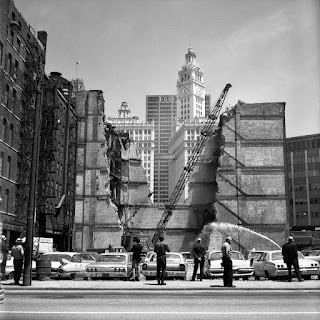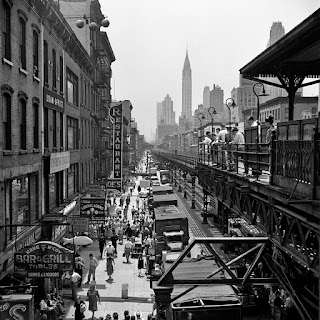Last night we watched a wonderful documentary called Finding Vivian Maier, about a woman who worked her whole life (1926–2009) as a nanny but who on the side made photographs—more than a hundred thousand of them. And they were amazing. Street photography mostly, focusing on the 1950s and 1960s, as well as self-portraits; also films. These materials (and more) were found by a young man, John Maloof, and gradually he started piecing together just who this mysterious, completely unknown photographer was. The result was the documentary, as well as a website and Maier's growing fame. I'm posting some photos here, but if you're interested, the website is a wealth of information and further imagery. Here is the first paragraph of the About page:
Piecing together Vivian Maier’s life can easily evoke Churchill’s famous quote about the vast land of Tsars and commissars that lay to the east. A person who fit the stereotypical European sensibilities of an independent liberated woman, accent and all, yet born in New York City. Someone who was intensely guarded and private, Vivian could be counted on to feistily preach her own very liberal worldview to anyone who cared to listen, or didn’t. Decidedly unmaterialistic, Vivian would come to amass a group of storage lockers stuffed to the brim with found items, art books, newspaper clippings, home films, as well as political tchotchkes and knick-knacks. The story of this nanny who has now wowed the world with her photography, and who incidentally recorded some of the most interesting marvels and peculiarities of Urban America in the second half of the twentieth century is seemingly beyond belief.
And here are some photos, very randomly selected, but again, if you want to see more (and I encourage it: the variety of what her eye caught is astonishing), go to the website.
 |
| Self-portrait |
Later, she worked in color as well:
















































